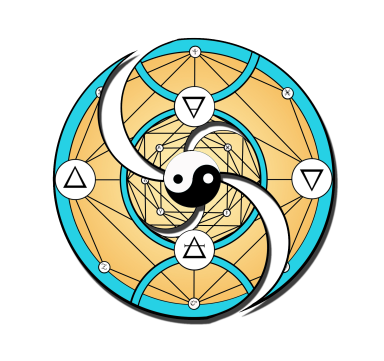Massage Therapy
Answer to the often asked question about scheduling a massage:
If you have a chronic condition, specific areas of strain and tension, or do a very physically demanding job, consider scheduling a message every one to three weeks. For general tune-ups, consider scheduling a massage every four to six weeks. If you're still unsure how often to get a massage, consider scheduling a consultation appointment.
Assisted Stretching
Assisted stretching is a technique where one person helps another person stretch using specific techniques to increase mobility and flexibility of a muscle or
group of muscles. Assisted stretching is a gentle technique that can be used on children, adults, the elderly and those
with physical disabilities.
Benefits
Range of Motion, Flexibility,
Circulation, Posture, Muscle and
Joint Pain, Stress, Pain, Balance, Sciatica, Pre and Post Event Care
Sports Massage
This is a systematic manipulation of the soft tissues of the body that focuses on muscles relevant to a particular sport or event. Athletes of all levels may benefit from sports massage be it pre-performance, post-performance, or during training. During the session the therapist will use a combination of strokes and stretching individually tailored to assist with the athlete's desired results.
Benefits
Maintenance for Athletes,
Circulation, Detoxification,
Minor Injuries, Tight Muscles, Dislocations, Nervousness,
Scar Tissue
Structural Integration
Each session focuses on freeing restrictions or holdings trapped in a particular region of the body.
A practitioner also maintains a holistic view of the client's entire system during each session, thus ensuring the transformational process evolves in a comfortable and harmonious way.
Benefits
Chronic Muscular and/or
Joint Pain, Range of Motion,
Sciatica, Piriformis Syndrome
Thoracic Outlet Syndrome
Carpal Tunnel Syndrome
Posture, Flexibility,
Holding Patterns, Breathing,
Injuries, Numbness
Injury Rehabilitation Massage
This massage consists of a unique combination of injury, deep tissue, sports, Russian, trigger point and structural massage designed specifically
to help overcome injuries and chronic pain. During the session, the practitioner will pinpoint areas placing stress on the body and, targeting the muscular attachment points, and begin the process to release these issues.
Benefits
Chronic Muscular
and/or Joint Pain
Pre/Post-Surgery Recovery
Injuries, Range of Motion
Sciatica, Piriformis Syndrome
Thoracic Outlet Syndrome
Carpal Tunnel Syndrome
Scar Tissue, Arthritis
Nerve Pain
Trigger Point Therapy
Trigger point therapy is an effective technique which is used to treat trigger points and muscular knots. TPT helps to decrease pain and relieve muscle tightness. Trigger points are formed in soft tissues. Acute trauma, overuse or repetitive microtrauma can lead to the development
of stress on muscle fibers. This can lead to muscular knots, known as trigger points. Trigger pointing is the most effective treatment to inactive trigger points, and it prompts relief of symptoms.
Benefits
Chronic Pain
Pre/Post-Surgery Recovery
Injuries, Range of Motion
Sciatica, Piriformis Syndrome
Thoracic Outlet Syndrome
Carpal Tunnel Syndrome
Arthritis, Nerve pain
Circulation, Stress and
Stress-Related Conditions
Tension Headaches
Migraine
Deep Tissue Massage
Deep tissue massage targets chronic tension in muscles that lie far below the body’s surface. When there is chronic muscle tension or injury, there are usually adhesions (bands of painful, rigid tissue) in muscles, tendons, and ligaments. Adhesions can block circulation and cause pain, limited movement, and inflammation. Deep tissue massage works by physically breaking down these adhesions to relieve pain and restore normal movement. Deep muscle techniques involve slow strokes, direct pressure or friction movements that go across the muscle grain.
Benefits
Chronic pain
Limited Mobility
Recovery from Injuries
Repetitive Strain Injury
Carpal Tunnel Syndrome
Osteoarthritis Pain
Fibromyalgia
Muscle spasms
Swedish Massage
The most common form of massage, Swedish Massage
calms the nervous system and promotes a sense of relaxation and wellbeing. During the
session, the therapist uses firm but gentle pressure, aided
by oil to reduce friction, to compress and relax muscles, always stroking in the
direction of the heart.
Benefits
Stress and Tension-Related
Disorders
Anxiety
Immune System
Circulation
Chronic Fatigue
Depression
Hot Stone Massage
A hot stone massage is used to help you relax and ease
tense muscles and damaged
soft tissues throughout your
body. During a hot stone massage, smooth, flat, heated stones are placed on specific parts of your body depending on the muscles and tissues
that are being worked on.
Benefits
Anxiety, Autoimmune Issues
Chronic Headaches, Depression
Digestive Problems
Exercise-related Injuries
Fatigue, Fibromyalgia
Insomnia, Lymphedema
Low Back Pain, Muscle Spasms
Multiple Sclerosis
Osteoarthritis
Post-Surgery Pain
Repetitive Stress Injuries
Sciatica, Sports Injuries
Prenatal Massage
This massage focuses on helping the body adjust to the many changes that occur during pregnancy by reducing stress, decreasing arm and leg swelling, and relieving muscle and joint pain. During the session, the therapist will
assist you into a comfortable position and using firm, but gentle strokes help tend to your needs. This type of
massage may be particularly helpful during a time when medication and other medical options may be more limited.
Benefits
Stress, Joint and Muscle Pain
Better Sleep
Reduces Swelling
Boosts Blood Circulation
Lower Back Pain
Pregnancy Headaches
Labor Pain, Recovery
We need your consent to load the translations
We use a third-party service to translate the website content that may collect data about your activity. Please review the details in the privacy policy and accept the service to view the translations.
